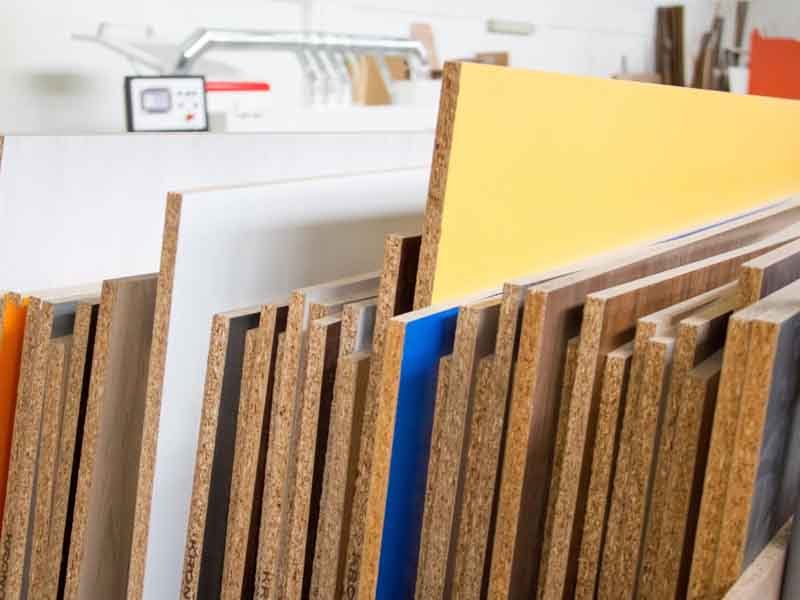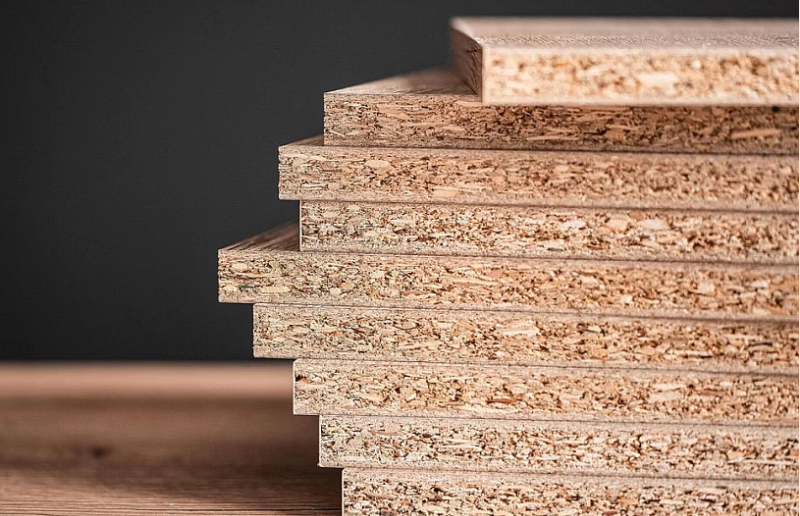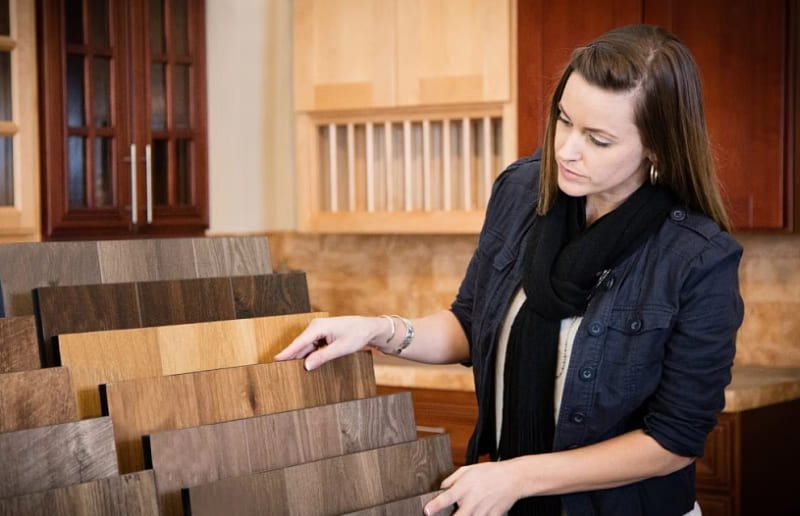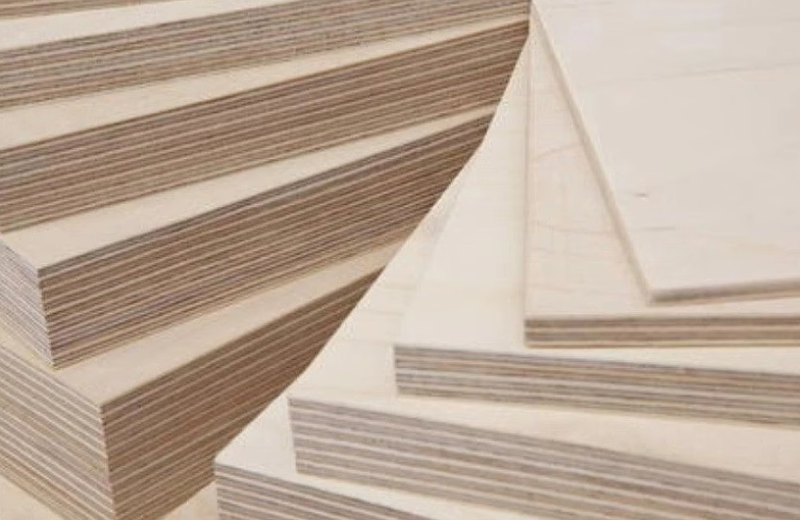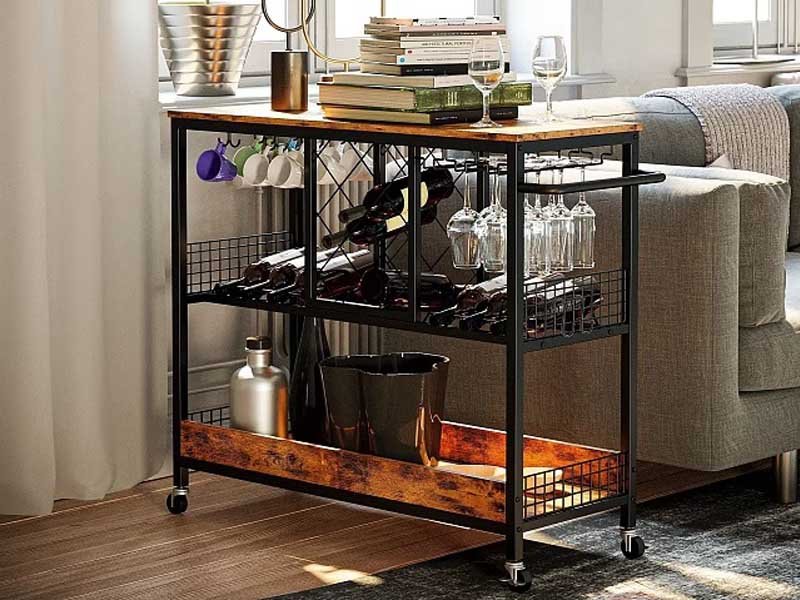MDF boards can present challenges in longevity and quality due to various factors. Exploring these factors helps to ensure durability while meeting consumer demands.
The lifespan of MDF boards is influenced by resin type, fiber quality, density, and environmental factors. Understanding these elements can significantly enhance their durability and reliability for manufacturing and design.
Navigating the intricacies of MDF board durability can seem daunting, but by focusing on quality materials, understanding environmental impacts, and implementing best practices in sourcing and marketing, businesses can thrive in this sector.
How Does MDF Composition Affect Its Durability?
Durability concerns often arise from varying MDF compositions affecting project outcomes. Agitation grows as we notice fluctuations in quality and consistency in MDF products.
Different MDF compositions impact its durability due to resin type, fiber quality, and density levels. Selecting the right composition ensures product longevity and suitability for intended usage.
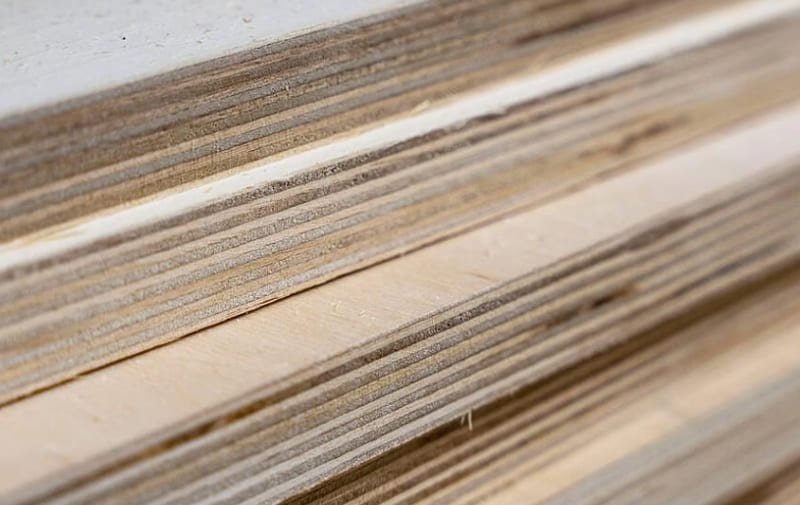
Resin Type and Its Influence
The resin used in MDF can substantially affect its properties. Different resins have different characteristics. Urea-formaldehyde resin1 is commonly used due to cost-effectiveness. However, it may offer lower moisture resistance. On the other hand, melamine-formaldehyde resin2 provides better moisture protection and structural integrity but tends to be more costly. The choice of resin should align with the specific environmental conditions the MDF will be exposed to. For instance, areas with high humidity may benefit from MDF with melamine-formaldehyde resin due to its superior resistance.
Fiber Quality and Product Robustness
High-quality wood fibers are a cornerstone of robust MDF. When MDF is constructed from superior fibers, the result is a denser and more durable board. Low-quality fibers may lead to weaker products that are prone to damage. It's important to consider the origin and processing of these fibers. Higher grades of fibers generally yield a sturdier product, which can extend the life of the MDF. This translates to fewer replacements or repairs, offering long-term advantages.
Density Levels: Balancing Durability and Cost
MDF is available in various density levels, which directly relate to the product's durability. Higher density MDFs are tougher but also heavier and more expensive. The table below illustrates the trade-offs between different MDF density levels:
| Density Level | Durability | Weight | Cost Impact |
|---|---|---|---|
| Low | Moderate | Light | Lower |
| Medium | High | Medium | Moderate |
| High | Very High | Heavy | Higher |
The choice depends on the application requirements. High-density MDF is preferable for projects demanding high strength and durability. Conversely, a medium or low-density product might suffice where weight and cost are bigger concerns.
Conclusion
Choosing the correct MDF involves understanding these components: resin type3, fiber quality, and density levels4, fiber quality, and density levels. Each factor plays a role in contributing to the final product's performance. By paying attention to these variables, you can align product selection with project demands, ensuring optimal durability and value. Always tailor choices to specific use cases and environmental exposure for the best results.
Different types of resin used in MDF significantly influence its moisture resistance.True
The resin type, such as urea-formaldehyde or melamine-formaldehyde, directly affects the MDF's ability to resist moisture, impacting overall durability.
All MDF compositions have the same durability regardless of resin type.False
Different MDF compositions lead to varying levels of durability; resin type plays a critical role in determining moisture resistance and strength.
How Does Moisture Exposure Affect the Lifespan of MDF Products?
Moisture is the silent enemy of MDF. It's essential to understand its impact and how to mitigate the risks.
Moisture causes MDF to swell, warp, and eventually deteriorate. Ensuring products are rated for moisture-resistance is critical. This protects the lifespan of MDF items against humidity and accidental spills.
Understanding Moisture and MDF
Moisture exposure5 is one of the most significant threats to MDF. When MDF is exposed to water, it absorbs the moisture quickly. This leads to expansion, weakening, and sometimes a complete breakdown of the structure. Unlike solid wood, MDF lacks natural wet-resistance, making it vulnerable in damp environments. To choose MDF wisely, knowing its moisture-resistance rating6 is key. Specially coated MDF can resist spills and humidity better. Bathrooms and kitchens often need water-resistant materials. Consider using high moisture-resistant products7 in these settings. For example, some MDF types have extra layers to shield against moisture.
Environmental Impact on Features
Environmental conditions such as humidity and temperature also affect MDF. High humidity levels cause MDF to take in moisture from the air. Conversely, very dry conditions make MDF release moisture, potentially leading to shrinkage. Both situations result in structural stress.
Here's a table showcasing how environmental factors influence MDF longevity:
| Environmental Factor | Impact on MDF |
|---|---|
| High Humidity | Increased swelling |
| Low Humidity | Potential shrinkage |
| Consistent Climate | Optimal condition |
| Variable Climate | Fluctuating durability |
Effective Solutions for Moisture Issues
To counter moisture-related issues, one should first consider coated MDF8v. Coatings protect surfaces and prevent moisture seepage. Sealants can add an extra layer of defense. Additionally, ensuring proper installation9 is vital. Even the best MDF won’t last long if misused.
Indoor environments with controlled climate settings extend MDF life. Routine checks for leaks and proper cleaning practices help maintain MDF's integrity. If an MDF product will be near water or steam, prioritize products specifically designed for such environments. For instance, look for symbol ratings that specify moisture resistance.
Moisture and MDF products can be a challenging pair. However, with the right knowledge and preparation, the lifespan of MDF can be significantly extended. Make informed choices and protect MDF from environmental conditions for long-lasting results.
Moisture exposure can cause MDF to swell and weaken over time.True
MDF absorbs moisture, leading to expansion and structural weakening, which decreases its lifespan.
MDF products are inherently resistant to moisture without any special coatings.False
MDF lacks natural moisture resistance and requires coatings for protection against humidity and spills.
Why Is Quality Assurance Important In MDF Manufacturing?
Inconsistent product quality can lead to dissatisfied customers and lost revenue. Implement effective quality assurance10 practices to ensure MDF products meet industry standards and customer expectations.
Quality assurance in MDF manufacturing ensures product consistency and adherence to safety standards, reducing defects and enhancing reliability. Certification, production processes, and supplier audits are central in maintaining these standards.
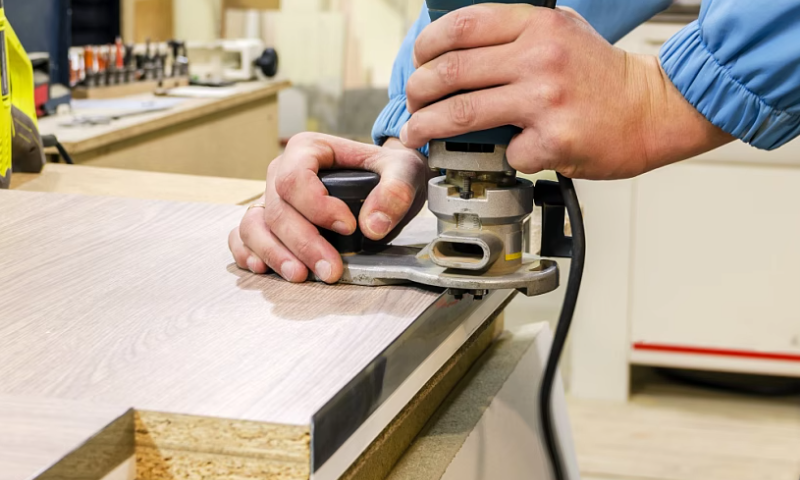
Quality assurance (QA) in MDF manufacturing is essential for producing high-quality, reliable products. The importance of QA processes lies in their ability to ensure that the products meet established standards for performance, safety, and environmental impact. I will guide you through important aspects of QA in MDF production, helping you understand its necessity for manufacturing excellence.
Certification Standards11
Certification plays a pivotal role in QA by confirming that products adhere to recognized safety and environmental criteria. For MDF, this often means compliance with standards like CARB (California Air Resources Board) or the E1 grade for formaldehyde emissions. Such certifications offer assurance that the products are safe for indoor use and environmentally responsible. I have seen firsthand how certified MDF products gain market trust quickly, leading to wider acceptance and increased sales.
Production Consistency
Consistent production quality is vital in maintaining brand reputation and customer satisfaction. Manufacturers who commit to stringent QA measures typically experience lower defect rates in their products. This commitment results from employing standardized processes, from raw material selection to the final product. These measures ensure each production batch matches the desired quality specifications. Imagine a line production where every panel of MDF is identical in density and finish. This uniformity is achievable through diligent quality control practices, reducing customer complaints and returns.
Supplier Audits12
Regular audits and inspections of supplier facilities are integral to QA in MDF manufacturing. Suppliers must adhere to the same quality standards expected of the final product. Conducting audits enables manufacturers to verify compliance and ensure the reliability of raw materials. By evaluating supplier processes and products, companies can identify potential issues before they impact the manufacturing process. I once worked with a manufacturer that had issues with inconsistent supplier quality, leading to production delays. After implementing a rigorous audit schedule, these issues diminished, and production timelines improved significantly.
| Practice | Description | Benefit |
|---|---|---|
| Certification Standards | Achieving regulatory compliance through certifications | Safety and market credibility |
| Production Consistency | Implementing standardized production processes | Reduced defects, improved trust |
| Supplier Audits | Regular inspection and verification of suppliers | Ensures raw material reliability |
In summary, quality assurance in MDF manufacturing13 is a multifaceted approach encompassing certification, production processes, and supplier management14. These aspects of QA help ensure that MDF products are not only safe and environmentally friendly but also consistent in quality. By focusing on QA, manufacturers can meet consumer expectations, enhance their market competitiveness, and ultimately protect their brand reputation. The strategic implementation of QA protocols aligns with my experience of its critical role in achieving quality excellence and operational efficiency in MDF manufacturing.
Quality assurance in MDF manufacturing helps ensure product consistency and safety compliance.True
Effective quality assurance practices confirm that MDF products meet industry standards for performance, safety, and environmental impact.
Quality assurance has no impact on customer satisfaction in MDF manufacturing.False
On the contrary, quality assurance directly influences customer satisfaction by reducing defect rates and ensuring consistent product quality.
What Are the Regulatory Standards for MDF Importing?
Navigating complex regulations is tough. Failing to meet standards can block market entry. Understanding these regulations is key to success.
Europe and North America enforce strict formaldehyde standards. Compliance is necessary for market access. Meeting emission levels is not optional, it's essential.
Navigating Regulatory Frameworks
In the MDF industry, regulatory standards are not mere guidelines but essential requirements. Ignoring these regulations can lead to severe penalties, including restricted market access. Europe and North America lead the charge in environmental regulations concerning formaldehyde emissions, setting the stage for the rest of the world. Let's dig deeper into why these regulations are crucial for successful MDF importing.
Understanding Formaldehyde Standards
Formaldehyde, a common component in MDF, poses health risks. Both Europe and North America have strict limits on its emissions. In Europe, EN 1398615 is the primary standard governing formaldehyde emissions in composite wood products. This regulation mandates specific testing and certification processes. Likewise, in North America, the United States' TSCA Title VI16 aligns closely with the California Air Resource Board (CARB) standards, placing similar restrictions on formaldehyde levels in wood products.
Essential Compliance Steps
Compliance begins with understanding exact regulatory requirements. It includes knowing permissible formaldehyde emission levels, required certification processes, and testing methods. These details may vary slightly between Europe and North America, but the core principle remains the same: ensure minimal environmental and health impacts.
Here's a brief comparison of major compliance requirements:
| Regulation | Region | Formaldehyde Limit | Certification Required |
|---|---|---|---|
| EN 13986 | Europe | ≤0.1 ppm | Yes |
| TSCA Title VI | North America | ≤0.05 ppm | Yes |
Importance of Certifications
Certifications from recognized bodies17 are more than formalities. They are verification of compliance with stringent safety and environmental standards. Certifications can streamline market access, enhance product reputation, and build consumer trust. Partnering with certified testing laboratories ensures that all products meet or exceed regulatory standards.
Practical Considerations
Embedding compliance within operations requires consistent quality checks, documentation, and continual engagement with regulatory changes. Companies that leverage technology for real-time monitoring gain a competitive advantage. Additionally, continuous staff training on regulatory compliance18 can mitigate errors and oversight.
In summary, understanding and adhering to regulatory standards is vital in the MDF industry. Compliance ensures market entry and sustains reputation in demanding markets. As regulations evolve, ongoing education and investment in compliance infrastructure will remain crucial. The stakes are high, and the rewards are greater for those who meet these standards head-on.
Europe and North America have strict regulations on formaldehyde emissions in MDF.True
Both regions enforce stringent limits on formaldehyde levels in MDF to protect health and the environment.
Formal compliance with regulations in the MDF industry is optional for market access.False
Compliance with regulatory standards is mandatory for market entry in Europe and North America, not optional.
How Can Strategic MDF Sourcing Boost Profitability?
Finding quality MDF is hard. It is costly and labor-intensive. Understanding strategic sourcing can transform challenges into opportunities for profit growth.
Strategic MDF sourcing balances cost, quality, supplier reliability, and logistical efficiency to optimize profitability. It involves selecting suitable MDF, nurturing supplier relationships, and reducing operational costs through streamlined logistics.
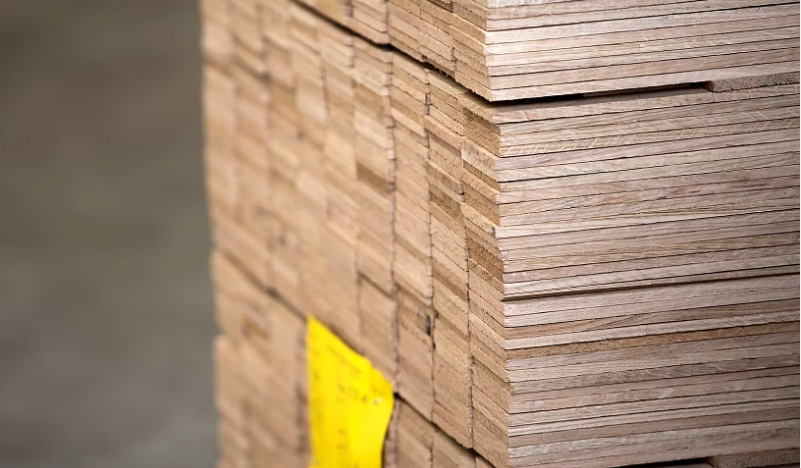
Dive Deeper into Strategic Sourcing of MDF
Profitability is at the core of every business decision. Let's explore how strategic sourcing of MDF19 contributes to this objective by focusing on three essential factors: cost efficiency, supplier relationships20, and logistics optimization. Each plays a crucial role in making sourcing MDF an advantage rather than a challenge.
Cost Efficiency
Cost efficiency does not mean compromising on quality. Instead, it is about finding a balance. Selecting MDF that meets your specific performance needs without going overboard on specifications can reduce procurement costs significantly. Often, we think more is better. However, a more nuanced approach can serve you better. Consider the following table to understand how different factors impact cost:
| Factor | Influence on Cost |
|---|---|
| Performance Needs | Determine grade and type of MDF required |
| Quantity | Bulk purchasing can reduce unit cost |
| Specification | Avoiding over-specifications minimizes waste |
By carefully considering these, you are well on your way to achieving cost efficiency. In my personal experience, evaluating these factors upfront helps prevent unexpected expenses later.
Supplier Relationships21
Fostering strong relationships with suppliers is another pillar of strategic sourcing. Stable relationships can lead to better pricing, high-quality materials, and a reliable supply chain. Consistency is crucial. It reduces the risk of running into shortages or receiving subpar materials. Make time to build relationships with your suppliers. They are more likely to offer favorable terms and can become trusted partners.
Logistics Optimization22
Logistics optimization involves understanding and managing shipping costs and lead times. These often overlooked aspects can significantly cut overhead when optimized. It may sound simple, but knowing the ins and outs of logistics can save time and money. Let me share an insight: align your sourcing strategy with logistics to see smoother operations. Analyzing shipping routes and consolidating shipments can further enhance efficiency.
In conclusion, strategic MDF sourcing23 boosts profitability by balancing cost, cultivating supplier relationships, and optimizing logistics. These foundational strategies are not only about saving money but also about creating a robust framework for sustainable growth. Embrace these strategies and transform your approach to MDF sourcing to unlock new profitability levels.
Strategic MDF sourcing enhances profitability through improved supplier relationships.True
Strong supplier relationships lead to better pricing and higher quality materials, positively impacting profit margins.
Cost efficiency in MDF sourcing means always choosing the most expensive options.False
Cost efficiency is about balancing cost and quality, not necessarily selecting the most expensive options which can lead to unnecessary expenses.
How Can One Effectively Implement Best Practices in MDF Product Marketing?
Failed marketing can ruin MDF potential. Great marketing means showing many advantages about MDF. This can turn potential interest into sales.
To effectively implement best practices in MDF product marketing, focus on educating customers about its benefits, showcasing its applications, and emphasizing sustainability. These efforts will enhance understanding and appeal, leading to increased sales and market growth.
Understanding MDF Benefits24
To highlight MDF effectively, education is crucial. MDF, or Medium Density Fiberboard, stands out due to its unique benefits compared to other materials. MDF's smooth finish is particularly appealing for those looking to achieve an even paint job or intricate design. Unlike natural wood, MDF does not have knots that can interfere with both the construction process. Beyond aesthetics, MDF offers significant advantages due to its cost-effectiveness25. For consumers balancing budget with quality, MDF can be a top choice due to its affordability. This calls for a clear communication strategy to relay these benefits effectively to potential buyers.
Applications of MDF are vast. It can be used for furniture, cabinetry, and intricate moldings, thanks to its versatility and durability. Highlighting successful projects where MDF is employed can help customers visualize its potential in their spaces. An MDF-based furniture piece might demonstrate both durability and aesthetic appeal through a sleek finish. Providing case studies of such successful applications can strengthen consumer confidence in the product.
The Role of Sustainability
In today's world, sustainability26 is more critical than ever. Consumers are increasingly inclined towards products that have a minimal environmental impact. MDF is made from engineered wood fibers, largely reclaimed from the waste of other wood production processes, making it a more sustainable choice than many alternatives. Marketing strategies that emphasize the eco-friendly aspects of MDF can attract environmentally conscientious buyers enthusiastic about reducing their carbon footprint.
MDF Marketing Strategy Table
| Strategy | Description | Benefit |
|---|---|---|
| Product Education | Educate on smooth finish, affordability, and durability | Informed customers |
| Highlight Applications | Showcase MDF in real-world settings | Increased consumer confidence |
| Sustainability Focus | Promote eco-friendly aspects of MDF | Appeal to green consumers |
Implementing These Strategies
One essential strategy for communicating these points is storytelling27. By using narratives in marketing materials that demonstrate the transformation of raw MDF into beautiful, functional products, you can evoke emotional responses and deepen connections with the target audience. For example, a narrative that follows the life cycle of an MDF coffee table—from production to becoming a cherished part of a family's living room—can convey both the practical and emotional benefits of MDF products.
Integrating customer testimonials28 and reviews into marketing materials can also add credibility. Prospective buyers often trust peer reviews. Real experiences shared through testimonials can validate the claims made in marketing campaigns, providing assurance to hesitant customers.
In conclusion, implementing best practices in MDF marketing requires a multi-faceted approach. Educating prospects, showcasing the product's practical uses, and emphasizing sustainability can collectively attract and retain customers. Balancing these strategies ensures that MDF's advantages are communicated effectively, paving the way for increased sales and market presence.
MDF has a smooth finish that enhances paint application.True
MDF is known for its smooth surface that allows for an even paint job, making it preferable for many applications.
MDF is made entirely from virgin wood, making it less sustainable.False
MDF is made from engineered wood fibers primarily reclaimed from wood production waste, which contributes to its sustainability compared to other materials.
Conclusion
Understanding MDF's composition, durability factors, and quality assurance processes is crucial for importers to enhance sales and profitability in competitive markets.
-
Understanding the pros and cons of Urea-formaldehyde resin can help you make informed decisions for your MDF projects. ↩
-
Exploring the benefits of melamine-formaldehyde resin can enhance your knowledge of moisture-resistant MDF options. ↩
-
Understanding resin types can significantly impact the quality and durability of your MDF projects, making this knowledge essential. ↩
-
Learn about MDF density levels to choose the right product for your specific needs, optimizing performance and cost. ↩
-
Understanding the effects of moisture exposure on MDF can help you make informed decisions about material selection and maintenance. ↩
-
Knowing how to determine the moisture-resistance rating of MDF is crucial for selecting the right materials for your projects. ↩
-
Exploring the best high moisture-resistant products can help you protect your MDF in moisture-prone areas like kitchens and bathrooms. ↩
-
Explore the advantages of coated MDF to understand how it can effectively combat moisture issues and enhance durability. ↩
-
Discover best practices for installing MDF correctly to prevent moisture damage and extend its lifespan, ensuring your investment lasts. ↩
-
Exploring this resource will provide insights into effective QA practices that enhance product quality and customer satisfaction. ↩
-
Understanding certification standards is crucial for ensuring product safety and environmental compliance, which can boost market trust. ↩
-
This link will explain the importance of supplier audits in maintaining consistent quality and preventing production issues. ↩
-
Exploring best practices in MDF manufacturing can help improve production processes and product quality. ↩
-
Effective supplier management is key to maintaining high product quality and reliability in manufacturing. ↩
-
Exploring the EN 13986 standard will provide insights into compliance requirements for MDF products in Europe. ↩
-
Learning about TSCA Title VI is essential for MDF manufacturers to meet U.S. regulations and avoid penalties. ↩
-
Explore how certifications enhance product reputation and consumer trust, crucial for business success. ↩
-
Learn how ongoing training can reduce errors and improve compliance, leading to better operational efficiency. ↩
-
Exploring this resource will provide insights into how strategic sourcing can enhance your MDF procurement process and profitability. ↩
-
This link will explain the significance of strong supplier relationships in ensuring quality and reliability in MDF procurement. ↩
-
Exploring this resource will provide insights into how strong supplier relationships can enhance your sourcing strategy and profitability. ↩
-
This link will help you understand the critical role of logistics optimization in cutting costs and improving efficiency in your operations. ↩
-
Discovering best practices in MDF sourcing can significantly improve your profitability and operational efficiency. ↩
-
Explore this link to understand how MDF can enhance your projects with its unique benefits and applications. ↩
-
Discover why MDF is a budget-friendly option without compromising quality, making it ideal for various projects. ↩
-
Learn about the eco-friendly aspects of MDF and how it contributes to a greener environment, appealing to conscious consumers. ↩
-
Explore storytelling techniques to enhance your marketing strategy and connect emotionally with your audience. ↩
-
Discover how leveraging customer testimonials can build trust and credibility in your marketing efforts. ↩
